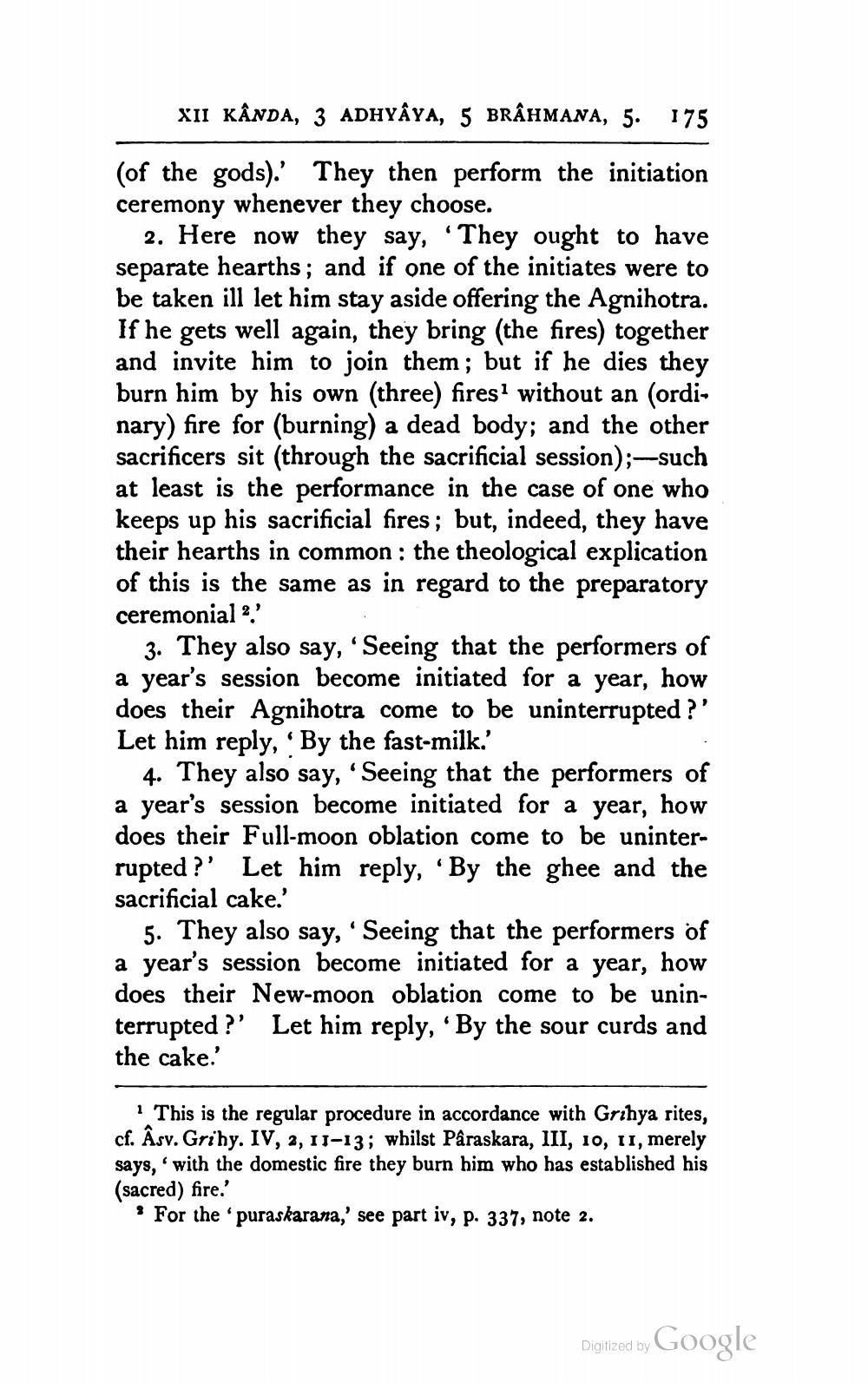________________
XII KÂNDA, 3 ADHYÂYA, 5 BRÂHMANA, 5. 175
(of the gods).' They then perform the initiation ceremony whenever they choose.
2. Here now they say, “They ought to have separate hearths; and if one of the initiates were to be taken ill let him stay aside offering the Agnihotra. If he gets well again, they bring (the fires) together and invite him to join them; but if he dies they burn him by his own (three) fires without an (ordinary) fire for (burning) a dead body; and the other sacrificers sit (through the sacrificial session);-such at least is the performance in the case of one who keeps up his sacrificial fires; but, indeed, they have their hearths in common : the theological explication of this is the same as in regard to the preparatory ceremonial 2.'
3. They also say, 'Seeing that the performers of a year's session become initiated for a year, how does their Agnihotra come to be uninterrupted ?' Let him reply, 'By the fast-milk.'
4. They also say, 'Seeing that the performers of a year's session become initiated for a year, how does their Full-moon oblation come to be uninterrupted ?' Let him reply, 'By the ghee and the sacrificial cake.'
5. They also say, 'Seeing that the performers of a year's session become initiated for a year, how does their New-moon oblation come to be uninterrupted ?' Let him reply, By the sour curds and the cake.'
1 This is the regular procedure in accordance with Grihya rites, cf. Âsv. Griby. IV, 2, 11–13; whilst Pâraskara, III, 10, 11, merely says, with the domestic fire they burn him who has established his (sacred) fire.'
* For the 'puraskarana,' see part iv, p. 337, note 2.
Digitized by Google




